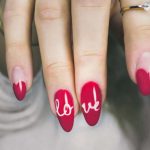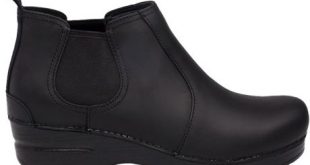There is no definitive answer to this question as it relates to nursing. The Nursing Board of California does not expressly prohibit dreadlocks for nurses but notes that appearance and grooming standards are determined on a case-by-case basis. Some organizations, such as the National Association of Black Nurses, do allow dreadlocks for nurses, while others, such as the American Nurses Association, do not.
Ultimately, it is up to the discretion of the nursing institution or organization as to whether or not dreadlocks are allowed. The Nursing Board of California explains that the decision to allow dreadlocks for nurses is typically made individually by each respective institution, which allows some flexibility.
As legal advice site Nolo notes, prohibiting dreads may violate Title VII of the Civil Rights Act if it discriminates based on race or ethnicity, but employers are permitted to have distinct guidelines for appearance and grooming when in uniform.
The hair type of a nurse can vary depending on the hospital they work for
The hair type of a nurse can vary depending on the hospital they work for. For example, some hospitals will allow nurses to have dreads while others may not allow any hairstyles that are considered to be “extreme.” If a nurse is thinking about having dreadlocks for their hair, it may be important to look into the hospital’s dress and grooming policy before making this decision.
Due to the fact that nurses give very close attention to patients and make life or death decisions daily, they should always maintain a proper appearance during work hours. Most hospitals will only allow nurses to have professional styles.
This means that although some nurses have been seen wearing dreads when they were off duty or working in other medical-related fields, these hairstyles are not allowed in their work environments because of the lack of professionalism shown when wearing them at hospitals/clinics, etc.
The main reason why most hospitals do not want nurses with locked hair

The hospital’s fear of legal action if a nurse with dreadlocks (a) hangs on and/or (b) loses their grip on too many patients can be attributed to the hospital’s liability. A few hospitals will allow nurses to wear dreads under the condition that they are very short. Nurses that wear braids or locks should measure how much hair is braided into each section that enters the braids for safety precautions.
Extreme hairstyles like Mohawks, Mohawk mullets, shaved heads, etc., are also not allowed because these styles do not represent professionalism in the medical field or any other setting for this matter. All in all, nurses can wear any hairstyle they want as long as it is within the dress and grooming policy set by their employers.
Nurses may wear dreads as long as they are neat and tidy
This means that the dreads must be pulled back into a ponytail or bun and should not be hanging down in front of the nurse’s face. If a nurse has long hair, they may choose to wear it in a braid or twist style instead of dreadlocks. Most hospitals will not allow nurses to have any hairstyles that are considered extreme. For example, the hospital may not allow nurses to have a Mohawk due to the fact that this style is too extreme.
There is no law that prohibits nurses from wearing dreadlocks so long as they maintain them appropriately to reflect professionalism
Nurses can wear their hair in any style or manner but should never wear it loose while caring for patients/clients. It is important to understand that the main reason why some hospitals will not allow nurses with dreadlocks or very long hair (i.e., beyond shoulder length) is that these hairstyles show a lack of professionalism and are not neat in appearance which reflects poorly on the hospital’s image.
However, if nurses follow their employer’s dress and grooming policy by keeping the dreads clean and neatly tied up, then it is legal for them to have locked hair. Nurses with locks/dreadlocks may need to cover them when at work or wearing uniforms. This especially applies when in the operating room area.
If a nurse has locks that are particularly long (i.e., longer than shoulder length), they may be asked to wear wigs over these locks so that they do not pose a hazard during surgery or other medical procedures. It is important for anyone who wears their hair in dreadlocks to keep this in mind. Many people find themselves being asked to remove their braids or locs for various reasons because of safety precautions taken during medical treatment.
Issues with nurses and dreads

Nurses wear dreads as a symbol of their profession and defiance against discrimination, as well as to show their connection with those living in the African diaspora. Nurses can express themselves through fashion but should never fail to meet the basic standards expected of employees at their medical facility.
All over the country, African American nurses are fighting against unfair treatment and discrimination by their employers, who are not allowing them to keep neat and tidy dreadlocks or braids/twists that show too much length.
Unfortunately, even if nurses follow dress and grooming policies, some doctors will ask them to remove these styles because they do not like what is represented. This is extremely problematic considering how many African Americans dreadlocked hairstyles as a way to express themselves culturally.
Legal Issues for nurses with dreadlocks
The public perception of dreadlocks is changing, but many hospitals still do not allow nurses with locks because they fear legal action if a nurse loses grip and hangs on to or drops a patient. There is no law that specifically prohibits this hairstyle for nurses who work in hospitals and clinics, but there can be some problems depending on local policy.
Some states will state that “Dreadlocks may not be allowed within the scope of dress code,” which means at-a-glance one cannot conclude whether nurses with locks/locs can or cannot wear them while some states like California and New Jersey specifically state nurses who “Wear locs, braids and /or twisted hairstyles that are more than 2 inches in thickness” may be violating hospital dress code policy.
Nurses do not want to break the law by wearing their hair long, which causes them to miss work due to discrimination, but they also do not want short-course cuts that leave them looking unprofessional for hospitals. This dilemma leads nurses with locked hair to lose focus of patient care if they have to worry about how they look instead of focusing on their job.
One suggestion is for doctors and management at a specific clinic or hospital to have a trial period where a nurse with locks can come to work and see if the doctor or management will request that she take out her locs. This way, a nurse will know if she should change her hairstyle for this job before ever getting hired, and it will show doctors and managers that nurses with dreadlocks are competent employees who just express themselves differently than other workers.
Conclusion
Nurses should always make sure their hair does not interfere with work before wearing it in dreads or other styles/hairstyles. If a nurse has been seen by patients with long hair or dreadlocked hair on prior occasions, then there seems to be no problem when these individuals wear their hair down for work purposes, etc. It’s important for nurses to pay close attention to their dress and to groom policy to stay in compliance with their job.
 Nursing Trends
Nursing Trends







